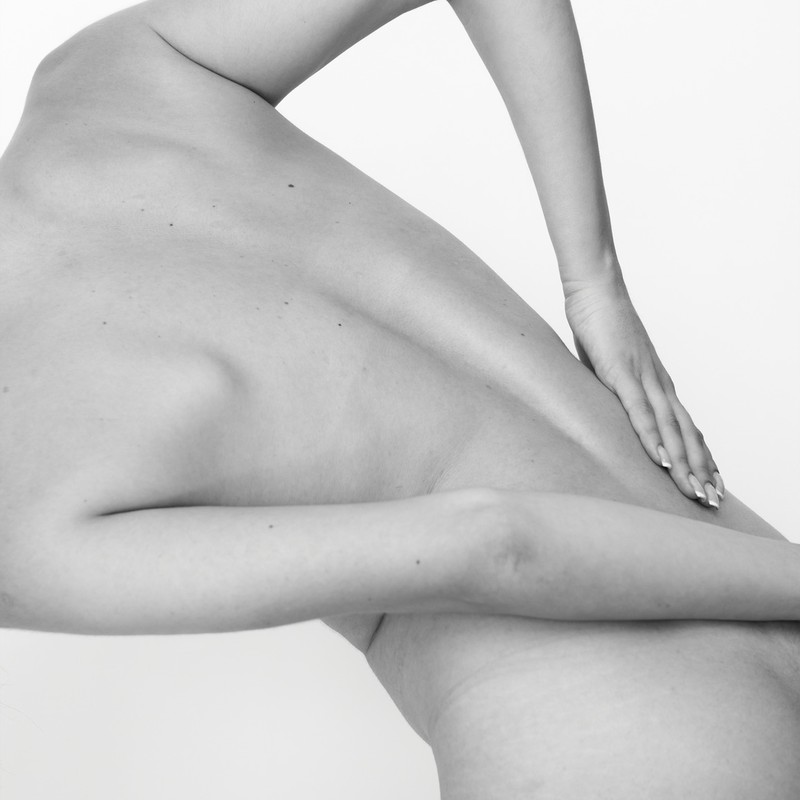How To Look After Your Body – According To An Osteopath
Understand Your Body
“Osteopathy is a form of manual therapy that believes there’s a link between the structure of the body and how it functions – if something isn’t working structurally, this will impact on how your body feels and moves. The fascinating thing about osteopathy is that no two people are the same – it isn’t a one-size-fits-all approach. Many people assume an osteopath only helps with bone or back pain, but most aches and pains have multiple factors behind them. For example, it could be the way in which a previous ankle injury is now causing hip pain, or the way you perform a certain exercise at the gym causing neck tension, and thus headaches. When you visit an osteopath, they will take a detailed case history, taking all elements of your lifestyle into consideration. Understanding your body, and appreciating that it’s different to any other, is at the heart of osteopathy.” – Anisha Joshi, osteopath
Keep Moving
“A lack of movement is one of the main reasons for pain and stiffness in the body. If you sit at a computer all day, for example, chances are you’ll experience some form of pain at the end of the day. For example, I occasionally experience shoulder and neck pain, which develops into headaches, after being hunched over a laptop for hours. If you do experience niggles, gentle mobility will restore movement and release tension. Also, think about strengthening your serratus anterior muscle – a muscle just below the armpit on both sides of the ribcage – as this plays a key role in keeping you upright and strong. To activate this muscle, place both hands flat to a wall, pull your shoulders back and squeeze for a few seconds. Do this ten to 20 times, twice daily, to see results. To instantly relieve neck pain, hold your collarbone with the opposite arm, turning your neck away from the shoulder and tilting your head back to feel a stretch in the front of your neck.” – Anisha
Don’t Waste Time On Your Posture
“It’s a common misconception that poor posture is bad for you. Countless studies have shown slumping doesn’t lead to any increase in back or neck pain in the body. Sitting upright, however, may improve confidence levels and how you appear to those around you. Instead, prioritise building a strong and adaptable body. Resistance training – whether in the form of lifting weights or using your own bodyweight – is key. Every week, aim for four strength training sessions, split into upper, lower, posterior chain and full body, which will enable your muscles to repair between sessions. Walking is also an underrated form of exercise – make the effort to walk as much as you can each and every day, even if it’s just around your office.” – Anisha
Upgrade Your Environment
“Swapping certain products you use on a daily basis with more ergonomic solutions designed to better support the body can make all the difference. If you sit at a laptop all day, invest in an ergonomic mouse – I rate Logitech Lift Ergonomic Vertical Mouse. And when it comes to your bedroom, consider upgrading your mattress. The Hypnos mattress range is unlike anything out there – remember that we spend a third our lives asleep, so a decent mattress is an important investment. I also sleep on an Aeyla Dual Pillow, which has a clever pillow-in-pillow design to support the neck and spine. A foam roller is also a must, even if you aren’t overly into fitness. The Manta Health foam roller gets my vote – it was designed by an osteopath and can help increase your range of movement and aid mobility.” – Anisha

Get Stress Under Control
“Stress is the enemy of a healthy body. It can lead to aching muscles and joints, low energy, irritability, tightness in the chest and headaches. Osteopathy can help release the muscles which facilitate deeper breathing, prompting the body to calm and relax. Find what works for you – deep tissue massage can be very effective, as can cryotherapy, red light therapy and infrared saunas. These also double up as a way to decrease joint inflammation and promote healing. But the small things also count – get daylight as soon as you wake up, start your day with five minutes of deep breathing, use a foam roller or lacrosse ball to massage deep into muscles, use generous amounts of magnesium salts in your bath, and body brush to aid lymphatic drainage.” – Nadia Alibhai, osteopath
Eat Plenty Of Protein
“Nutrition plays a significant role in muscle and joint repair – it’s not all about how you move and how you exercise. A protein-rich diet is essential and supplements can also help top up nutrient levels – I recommend a good-quality omega-3, magnesium and iron to my patients, all of which promote a stronger body and better energy levels. If you eat oily fish, be sure to eat this on a weekly basis, and if you’re vegan, try flaxseed oil. You’ll find many osteopaths are also trained in nutrition or naturopathy – this is because of the role food can play when it comes to reducing inflammation in the body.” – Anisha
Think About Gut Health
“Gut health is big news in the health world, and with good reason. Time and again, I see patients who experience stomach or digestive discomfort along with back pain. Research has shown our gut microbiome is hugely important to our body and overall health. Certain foods we eat can increase inflammation in the body and contribute to pain and discomfort. In fact, the nerve supply to your stomach also comes from your spine and mid-back area specifically. If you struggle with both a sore back and digestive issues, keep an eye on how much processed foods you are eating (including white carbs like bread and pasta) as well as caffeine, alcohol and artificial sweeteners. Foods that can help control inflammation include turmeric, ginger, wholegrains and omega-3.” – Anisha
Sleep More
“It’s no secret that sleep is important for our overall health and how our body deals with pain. In fact, it forms the majority of my post-treatment advice for any patient, regardless of age. There have been studies that suggest a lack of sleep is linked to an increased chance of musculoskeletal pain, and it’s during sleep that the body repairs, rests and recovers. If you are seeing an osteopath, sleep as much as possible to really benefit from the treatment. Osteopathy believes the body knows how to heal itself – it just needs a helpful hand in the right direction. Even if you can get to bed 30 minutes earlier, it will make a difference. If you have problems with your sleep, try taking a magnesium supplement in the evening, and try journalling. Even if it’s a brain dump on a notepad you keep by your bed, the physical act of writing can feel like you’ve emptied your brain.” – Anisha
Stay Active When Travelling
“Sitting for long periods of time, whether on a plane, train or in a car, is a recipe for sore, tight muscles and joints. If you are travelling, make an effort to stretch throughout your journey – get up every half an hour and walk to aid circulation and stretch the upper back, and point and flex your toes and ankles when sitting down. Staying hydrated also makes a significant difference. To stretch your neck, try reaching your nose down towards your armpit and hold for 20-30 seconds on each side; to stretch the mid-back when travelling, roll up a jumper and place it between your shoulder blades, curling forward and back against it to release tension.” – Nadia
For more information visit NadiaTheOsteopath.com & OsteoAnisha.com. Also follow @NadiaTheOsteopath & @OsteoAnisha.
DISCLAIMER: Features published by SheerLuxe are not intended to treat, diagnose, cure or prevent any disease. Always seek the advice of your GP or another qualified healthcare provider for any questions you have regarding a medical condition, and before undertaking any diet, exercise or other health-related programme.
DISCLAIMER: We endeavour to always credit the correct original source of every image we use. If you think a credit may be incorrect, please contact us at info@sheerluxe.com.


